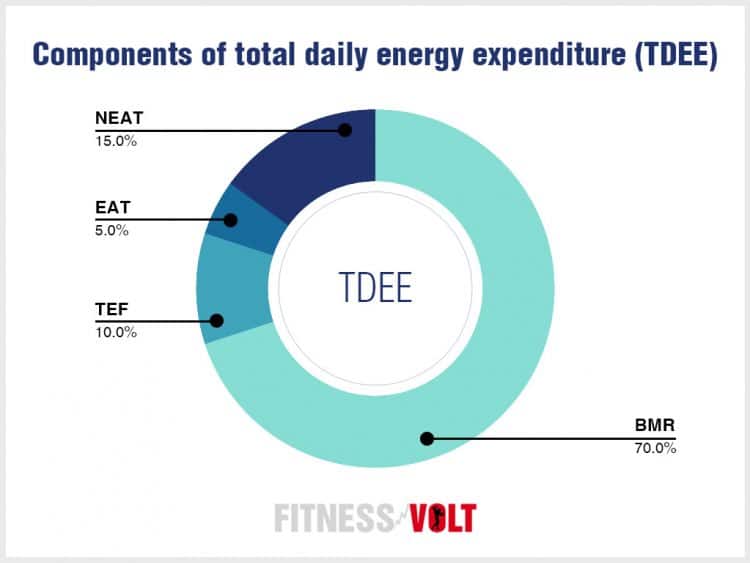A majority of people get a gym membership to lose their spare tire. It is also why most gyms have a relatively busy cardio section than the weight room. However, many individuals quit working out without achieving their fitness goals.
Why is that, you ask? A lack of a well-defined goal is arguably the most common reason.
If one of the first questions you ask after joining a gym is “How to lose 20 pounds in a month,” you’re already ahead of people who begin with a more generic “how do I lose weight?”
The difference between the two is too big to be ignored. Setting a timeline and a weight goal target gives you a deadline and makes you accountable. Every time you hit the gym with a well-defined goal, you’ll try to make the most of every set and rep because you’ve only got so many.
Once you’ve nailed down your weight goal and have a deadline on paper, you need to figure out the healthiest way of shedding the extra kilos. Remember, “healthiest” is the keyword here. You’ll find many fad diets and workout programs online, but you need to choose the one that is effective and will not jeopardize your health.
How to Lose 20 Pounds in 30 Days
Here is a detailed guide on how to achieve your weight loss goal:
1. Start with Assessing Your Physique
Losing 20 pounds in 30 days is no joke. To achieve your target, you’ll need to drop 0.66 pounds every day. While it is not impossible, it will not be a walk in the park.
For your first step in your weight loss journey, you should look at your goal with respect to your current physique. Are you underweight, overweight, or at the right weight for your height, age, sex, and activity level?
Not sure what your body weight should be? Check out the IBW (ideal body weight) calculator to find out if you’re over, under, or the right weight.

Body Fat Percentage Test
Losing 20 pounds in a month will play out differently for different people. If you are above 25 percent body fat, losing 20 pounds might be easier for you than an individual in the 10 to 15 percent body fat range.
[sc name=”style-blue-box” ]
Tip: You shouldn’t obsess about your body weight and look at it in isolation. If you weigh more than your peers because you’re more muscular and well built, you shouldn’t worry about cutting weight. Muscle is denser than fat and weighs more but takes up less room. You want to watch body composition, just not the scale.
[/sc]
Related: Body Composition Exercises: How to Burn Fat and Maintain Muscle Mass
2. Diet
When it comes to weight loss, you cannot outwork your mouth, so focus on your food.
If you Google “How to lose weight,” you’ll see several diet and training programs. While these transformation programs might guarantee results and feel like a godsend, they aren’t going to work for most people.
No two individuals are built the same or have the same lifestyle. On the other hand, for a diet to be effective, it needs to be designed as per an individual’s lifestyle. You cannot expect the same results following someone else’s diet that is starting their transformation journey at a different weight, height, or lives in a different part of the world.
Your best bet at weight loss will be to log your typical diet for a few days (four to seven) in a calorie tracking app like MyFitnessPal. Totaling the calories and dividing them by the number of days will give you your average daily maintenance calories.
Need a simpler way of knowing your daily maintenance calories? A rough estimate for calculating maintenance calories for a moderately active person is multiplying body weight in pounds by 15 (you roughly need 15 calories per pound of your body weight to maintain your current weight).
Check out our TDEE (total daily energy expenditure) calculator to know your:
- TDEE
- BMI
- Accurate BMR (basal metabolic rate)
- Ideal Weight
- Maximum Muscular Potential
- Daily Calorie Intake
- Daily Macronutrients (Maintenance, Cutting, Bulking)
- PDF Report

The Role of TDEE
Your total daily energy expenditure (TDEE) is your maintenance calories and will tell you the calories you burn in a day. For example, if your TDEE is 4,000 calories and you stick to eating this amount of calories a day, you won’t gain or lose weight.
3. Follow a Calorie Deficit Diet
Following a calorie deficit diet is the holy grail of weight loss. It doesn’t matter how hard you train in the gym — you will not see the desired weight loss results until you’re expending more calories than you eat in a day.
It goes without saying that you’ll have to cut out the junk food and empty calories from your diet if you want to undergo a physique transformation within a month.
Your diet should consist of nutrient-dense whole foods that keep you feeling satiated for longer and keep you from snacking on junk food between meals.
Related: 12 Foods That Contain the Highest Amount Of Protein
4. A Safe Weight Loss Goal
Now that you know you need to be on a calorie deficit to lose weight, it’s time to figure out how many calories a day you should be eating (or cutting) to achieve your goal body weight.

If you want to lose 20 pounds in a month, it translates to losing five pounds per week.
As per research, a pound of body fat is 3,500 calories. Based on this information, you’ll have to be in a 17,500 calorie a week (2,500 calories per day) deficit from your maintenance calories to achieve your goal weight. [1]
While running a 2,500 calorie deficit might be easy for some, it might not be possible for people who are not big eaters but hold stubborn body fat.
While cutting five pounds a week is possible, experts recommend cutting one to two pounds a week, especially before beginning your 20 pounds in a month transformation journey and ramping up your calorie-burning goal.
For reference, cutting one pound a week requires you to maintain a calorie deficit of a more manageable 500 calories. It changes to 1,000 calories a day for losing two pounds a week.
5. Exercise
Exercise can speed up your fat loss journey by boosting your calorie-burning process. For optimal weight loss, you should follow a combination of high-intensity interval training (HIIT) and low-intensity steady state (LISS) training.
You should begin your day with a fasted LISS cardio session, which can include a 30-35 minute light cardio activity. To enhance your weight loss progress, you could perform a 15-20 minute HIIT training session after your workout in the evening (if you train in the evening).
Related: HIIT vs. LISS Cardio: Which One Is Best for Fitness and Fat Loss?
6. Supplements
Supplements can help you shed the extra kilos. Here are the supps that you should add to your regimen:
- Fat Burner: They improve your metabolic rate and help you burn calories throughout the day.
- Whey Protein: Protein supplements are the darling of the fitness and bodybuilding community and are an effective supp to build muscle mass while losing fat. It can also help you feel satiated.
- L-Carnitine: It is a chemical made in the human brain, liver, and kidneys that helps the body turn fat into energy.

7. Drink More Water
In adult men, about 60 percent of their bodies are water. On the other hand, water accounts for 55 percent of an average adult woman’s body mass.
Water helps improve blood oxygen and nutrient circulation, keeps you feeling satiated, and can help lose weight. Furthermore, research has linked body fat and weight loss with drinking water in overweight girls and women. [2]
Water can also help in:
- Creating saliva
- Regulating body temperature
- Protecting your tissues, spinal cord, and joints
- Waste excretion
- Enhance physical performance
- Helping prevent constipation
- Improving digestion
- Improving immunity
- Boosts energy
- Elevating mood
- Improving skin quality
Drinking at least a gallon of water a day limits your chances of dehydration while optimizing your overall health.
Check Out: Water Intake Calculator
8. Sleep
Sleep deprivation can lead to overeating, bad food choices, and not giving your body enough time to rest and recuperate. It can also make you feel exhausted and put you at a greater risk of contracting diseases.
You need seven to eight hours of sleep every night to streamline your fat loss process as it can regulate your leptin and ghrelin levels, which are the hormones that affect your metabolism.
Ghrelin is responsible for telling your brain when you are hungry. On the other hand, leptin signals to your brain when you are full, and it is time to stop eating.
Related: The Importance of Sleep for Building Muscle and Losing Fat

9. Maintaining Weight
Many people lose weight, only to see it come back in a few months. Shedding the extra pounds is only half the battle. Once you have achieved your target weight, you need to adjust your diet to ensure that your weight is stable and you don’t gain it back.
Let’s assume that you have lost 20 pounds in a month. Now, you don’t want to return to your old eating habits as it will result in returning to ground zero. However, staying on the calorie deficit will result in further weight loss.
After you’ve shed 20 pounds in 30 days, add 500 calories to your diet and stick to it. It should help you gIn a pound of lean muscle mass every week. Arriving at the final maintenance calories will require trial and error and vary for each individual.
Is it safe to lose 20 pounds in a month?
While losing 20 pounds in a month is possible, it doesn’t mean everyone should do it. Losing 20 pounds in 30 days is an ambitious goal, and you should consult your physician before starting your transformation journey, especially if you’re dealing with any health conditions.
[sc name=”style-blue-box2″ ]
Tip: Use our weight loss calculator.
[/sc]
FAQs
How much weight can you lose in a month?
There is no way to put a number to this. However, as per the Centers for Disease Control and Prevention (CDC), on average, aiming for four to eight pounds of weight loss per month is a healthy goal.
How to lose 10 pounds in a month?
Whether you want to lose 10, 20, or 30 pounds in a month, the process remains the same. You need to be in a calorie deficit and follow the points mentioned above until you achieve your weight goal.
How to lose weight fast in 2 weeks?
If you’re on a deadline to lose weight, you could bundle a calorie deficit with a high-intensity training program. Depending on your weight loss goal, cut recommended calories from your diet after consulting a nutritionist.
Can I lose 20 pounds in a month without exercise?
Yes. It is possible to lose 20 pounds in a month without exercise. Follow the steps mentioned above and fine-tune your calorie cut to achieve your weight loss goal within 30 days. Of course, after consulting a nutritionist.
Wrapping Up
Losing weight isn’t as hard as some people think it is. Weight loss requires a strict training and diet regimen. Remember, feeling hungry and exhausted are common occurrences when you’re running a 17,500-a-week calorie deficit.
However, if you are dealing with health issues, you should consult a certified health professional before starting any new diet, training, or supplement routine.
Next read: How to Lose 30 Pounds in a Month — Explained!
References
- WISHNOFSKY M. Caloric equivalents of gained or lost weight. Am J Clin Nutr. 1958 Sep-Oct;6(5):542-6. doi: 10.1093/ajcn/6.5.542. PMID: 13594881.
- Vij VA, Joshi AS. Effect of ‘water-induced thermogenesis’ on body weight, body mass index and body composition of overweight subjects. J Clin Diagn Res. 2013 Sep;7(9):1894-6. doi: 10.7860/JCDR/2013/5862.3344. Epub 2013 Sep 10. PMID: 24179891; PMCID: PMC3809630.


